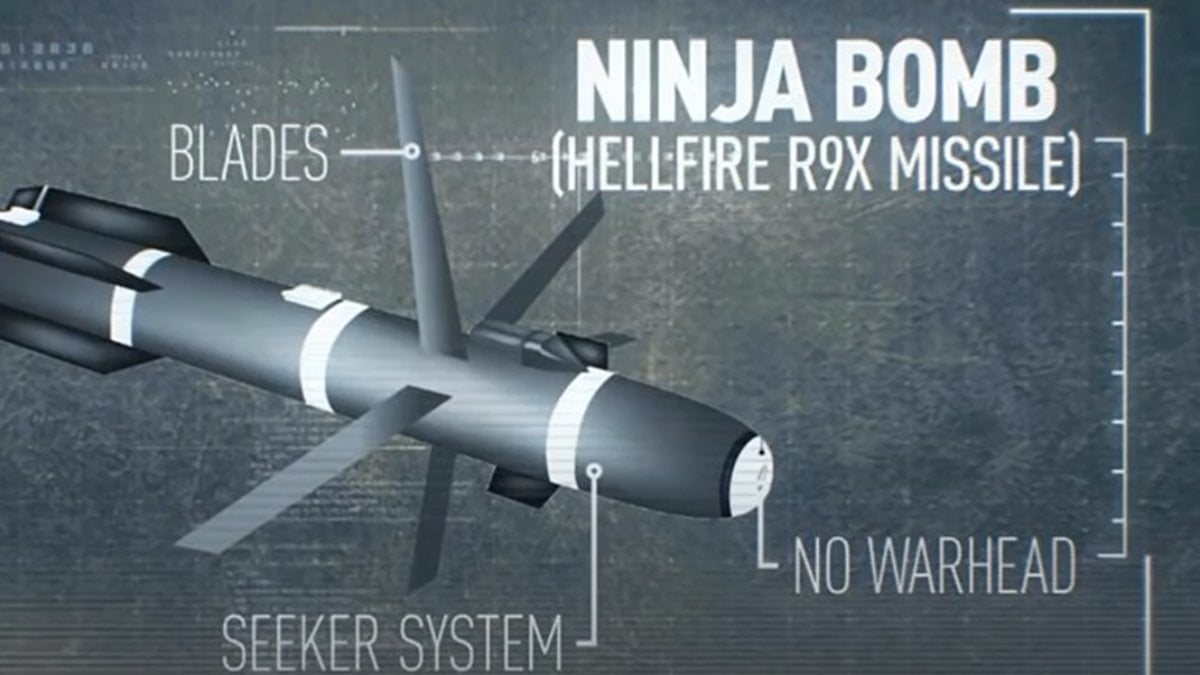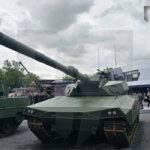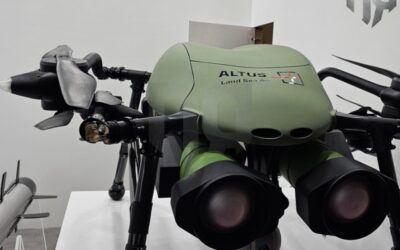DEFENCE
DEFENCE
ARMAMENTS

The latest R9X strike was carried out in retaliation for the suicide bombing of Hamid Karzai International Airport in Kabul last week that killed 13 US service members amid international efforts to evacuate foreign nationals and Afghans currently fleeing the Taliban’s tightening grip over the country.
According to the Wall Street Journal, on Saturday the US Pentagon used the R9X variant of the well-known AGM-114 Hellfire missile, fired by an MQ-9 Reaper drone, to kill two ISIS-K fighters in the Nangarhar province of Afghanistan.
Also read: Afghanistan | “Black Day” after blasts in Kabul – Latest developments
Colloquially referred to as a “ninja bomb” or “flying Ginsu” and first publicized by the Wall Street Journal back in 2019, the joint CIA/DoD R9X does not use an explosive warhead. Rather, the missile comes packed with a halo of blades deployed moments before impact to effectively eviscerate a target, a lethal update to the inert “Lazy Dog” bombs of the US campaigns in Korea and Vietnam.
Although there are no official confirmation sources, each blade is said to be about 46 cm (18 inches) long, giving the rocket a “range” of just about 91 cm (3 feet). This is a deadly new version of the “Lazy Dog” bombs of US campaigns in Korea and Vietnam.
NEW – @WSJ confirms the @CIA & @DeptofDefense have a new "secret" missile – the R9X, or "flying Ginsu" – which kills a selected target with 6 blades, but no explosive payload.
— "To the targeted person, it's as if a speeding anvil fell from the sky."https://t.co/DIQfnfJYDq pic.twitter.com/iM87WUFLhg
— Charles Lister (@Charles_Lister) May 9, 2019
The goal of using such a weapon, according to the Wall Street Journal, is to reduce the chance of collateral damage, which usually accompanies a conventional explosive warhead. Indeed, US military officials said Saturday that there were no civilian casualties after the attack.
The strike represents the US first known use of the R9X since August 2020, when the US-led military coalition likely deployed the Hellfire variant to kill Abu Yahya al-Uzbeki, an independent “military trainer” affiliated with the al Qaeda-linked Hurras Al-Din organization as he traveled through Syria’s Idlib province.
Before that, the US is thought to have used the R9X to take out Hurras Al-Din leaders Qassam al-Urduni and Bilal al-Sanaani in northwest Syria in June 2020; al Qaeda offshoot Hayat Tahrir al-Sham leader Abu Ahmed al-Jaziri in June 2019; a Taliban commander identified only as “Mohabullah” in Afghanistan in January 2019; and al Qaeda second-in-command Ahmad Hasan Abu Khayr al-Masri in February 2017.
With information from: Wall Street Journal, defenceredefined.com.cy
Also read: Afghanistan | US says drone strike killed IS-K planner
ARMAMENTS
NEWSLETTER SUBSCRIPTION
EUROSATORY 2024 | Missile Artillery Solutions from MBDA
With such a large number of interested attendees at MBDA’s pavilion at the Eurosatory 2024 Defence exhibition, the stand reminded of an…
KNDS | Showcases full range of LEOPARD battle tanks at EUROSATORY
KNDS continues to expand its technological advantage in the field of main battle tank development, as we have witnessed at the Defence and…
THEON SENSORS | Distinguishing appearance at EUROSATORY 2024 with new range of products
THEON SENSORS attended the International Defence and Security Exhibition EUROSATORY 2024 as an ambassador of Greek innovation…
EUROSATORY 2024 | Missile Artillery Solutions from MBDA
With such a large number of interested attendees at MBDA’s pavilion at the Eurosatory 2024 Defence exhibition, the stand reminded of an…
KNDS | Showcases full range of LEOPARD battle tanks at EUROSATORY
KNDS continues to expand its technological advantage in the field of main battle tank development, as we have witnessed at the Defence and…
THEON SENSORS | Distinguishing appearance at EUROSATORY 2024 with new range of products
THEON SENSORS attended the International Defence and Security Exhibition EUROSATORY 2024 as an ambassador of Greek innovation…
Ministry of Defence | Organization of Hellenic EDF Info Day
A Conference entitled “EDF Info Day” is organized in the Amphitheater of the National Gallery on Tuesday, July 9 from 09:00 to 17:00.
ALTUS LSA | Participates in EUROSATORY 2024 with KERVEROS in the foreground
The participation of ALTUS LSA in EUROSATORY 2024 is among the Greek participations of operational significance.
Freddy Beleris | Ιn jail until October
The elected mayor of Heimarra and Member of the European Parliament of New Democracy will remain in prison until October…















